
Whatsapp Us

Whatsapp Us
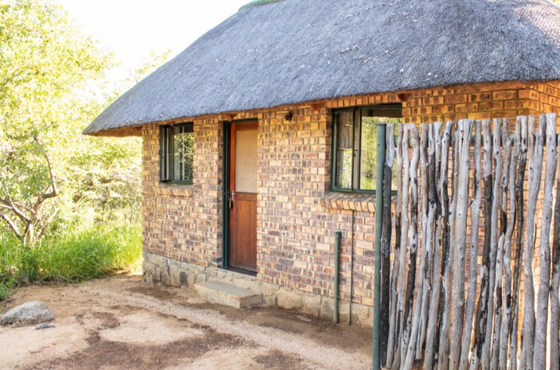
Built on stilts to increase the chances of seeing the wildlife up close, a group of guests is accommodated in thatch-roofed bungalows, located close to each other, but offering privacy to each couple. Only guests staying at Boulders Bush Lodge are allowed on the premises and it is exclusively available to groups of maximum twelve persons. There is no fence around the camp, but guests can feel safe because all the facilities are on raised platforms.
Boulders Bush Lodge is a secluded and private camp where guests have the opportunity to be away from the normal rat race. Take note that there is no wi-fi or cell phone reception at the camp.
Rates are per night and exclude 1% community fund which will be added when booking. Boulders guests check in at Mopani.
| Accommodation Type | Base Guests | Base Rate | Additional Adults |
|---|---|---|---|
| Boulders Bush lodge (PBO) | 8 | R 7,295 | R 1,018 |
| Accommodation Type | Base Guests | Base Rate | Additional Adults |
|---|---|---|---|
| Boulders Bush lodge (PBO) | 8 | R 8,539 | R 1,018 |
Accommodation is offered in 5 bungalows which are built on stilts and connected by elevated wooden walkways with each other and with the main communal area. A waterhole is next to the bungalows, offering private viewing of wildlife. Limited solar energy is available for the lights and fans. There are no electrical plug points available for appliances.
The larger family bungalow has 2 bedrooms, accommodating 2 persons in each bedroom on 2 single beds. Each room has an en-suite bathroom with a shower or bath, toilet and handbasin. A sliding door opens onto a veranda.
Four more Bungalows offer accommodation for 2 persons each. These bungalows are furnished with 2 single beds each and en-suite bathrooms with showers, baths, toilets and basins are available at each bungalow.
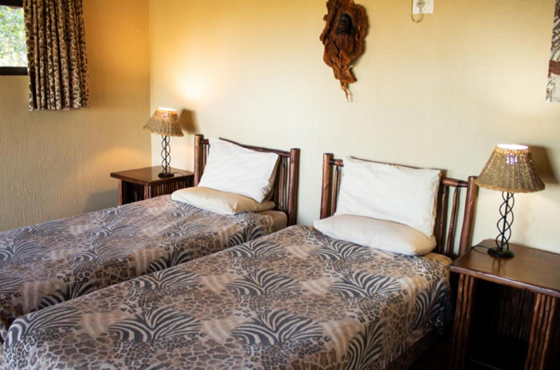
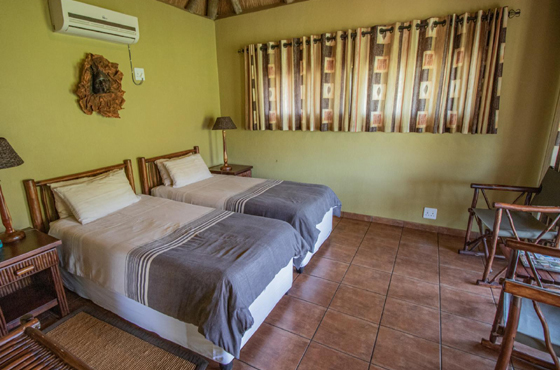
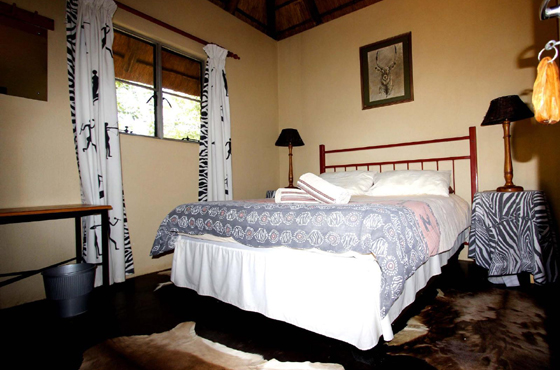
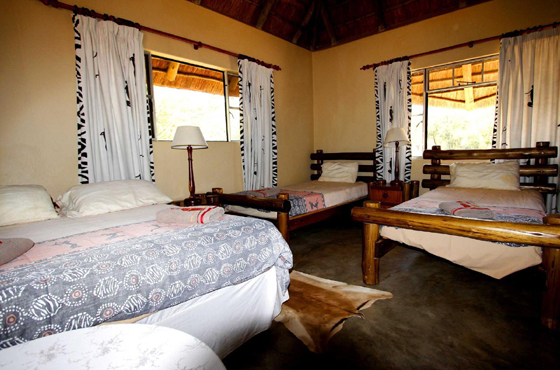
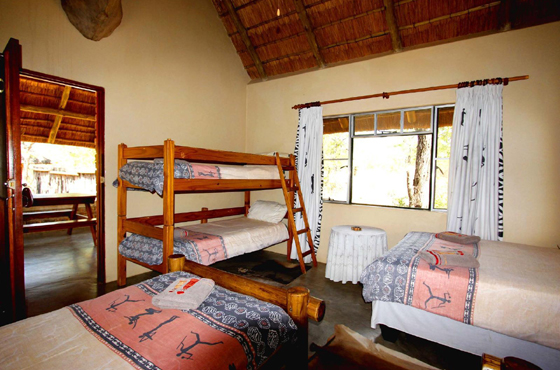
The main communal area at Boulders Bush Lodge has a fully equipped kitchen, dining room, bar, lounge and viewing deck, where barbecue facilities are provided. There is a fridge/freezer, gas stove and over, cutlery, crockery and cooking utensils in the kitchen.
The facilities are serviced daily and wood and gas can be bought at the lodge. Take note that the nearest supply shop is at Mopani Camp, which is 25 km from Boulders Bush Lodge. Gas and solar energy are provided and there is no electricity at the camp.
Boulders Bush Lodge is located about 55 km from the Phalaborwa Gate, which is the closest entrance gate to the lodge. Allow 6 to 7 hours for driving this route. Take note that there is no reception, shop or other facilities at the Lodge and guests must stock up on food and other supplies before driving all the way to the camp.
Because no day visitors or any other guests that are not booked at Boulders Bush Lodge will not be allowed onto the premises, the opportunities for private game viewing at the waterhole or in the surrounding area are numerous. Guests of Boulders enjoy uninterrupted views over the waterhole and guided bush walks and game drives are offered at Mopani Camp, which is 25 km from Boulders Bush Lodge.
Most of the rest camps in Kruger offer guests the opportunity to take part in daily early morning and afternoon guided walks. Professional, experienced and armed field guides take groups of up to eight persons out of the camp’s boundaries to explore the surrounding wilderness areas on foot.
Ensuring the safety of the guests, these guides share their knowledge of the fauna and flora and to explain natural wonders, enriching their knowledge of the African bush and wildlife.
The walks are informative and relaxed and don’t take longer than a few hours, focussing on the things not easily seen from a vehicle. Being out on foot, an area is covered more intensely, and guests are able to experience nature using all their senses. Large game in the area offers the possibility of encounters and the exhilarating experience of approaching them on foot.
More than 500 different bird species have a home in Kruger National Park, some of them not to be found anywhere else in South Africa. Numerous water points make for excellent birdwatching, while there are eleven bird/game-viewing hides in some of the camps and picnic sites in the park. Several more are earmarked for construction when sufficient funds become available.
Most species breed in summer when rains sustain most vegetation and food, but the larger birds of prey conversely breed during the dry winter, when their prey is most exposed. Out of the 507 species of birds found at Kruger, 253 are residents, 117 non-breeding migrants, and 147 are nomads.
Some of the larger birds require large territories or are sensitive to habitat degradation. Six of these birds, which are basically restricted to Kruger and other extensive conservation areas, have been assigned to a fanciful grouping called the "Big Six Birds".
Kruger’s game drives are for guests who want to get closer to the wild side of nature and experience the Park’s animals up close. Game Drives are offered at most of the rest camps and information is available and reservations can be made at reception at the camp.
Guests are transported in open vehicles and an experienced guide interprets the natural bush and offers insight into the ways of the Kruger Park. The duration of the Game Drives are approximately 3 hours.
Well over 255 recorded archaeological sites - ranging from early Stone Age, roughly 1 million years ago, to various Iron Age settlements and recent historical buildings - hold cultural and spiritual importance, while others reveal an exciting and romantic history of the area.
There are 336 tree species in the park of which 17 are protected trees.
With an estimated 1500 lions, 17 000 elephants, 48 000 buffalo, 1 000 leopards and just over 2 000 rhinos inhabiting the Kruger National Park, sighting the “Big Five” is very possible when doing game drives. Even though it should not be a prerequisite on a safari and sightings of specific animals absolutely happen on the luck of the draw, these animals are a huge attraction to visitors.
Kruger is one of the premier game-watching destinations in the world. Approximately 147 mammal species occur in the park. It is possible to see all the classical African big game, including elephant, black and white rhino, hippopotamus, giraffe, zebra, buffalo, warthog and many antelope species. Large carnivores include lion, leopard, cheetah, wild dog and spotted hyena. There are also many smaller mammals which are equally enticing.
Something else that became an attraction to wildlife viewing, is a group of insects known as the “Small Five”. This group includes the Elephant Shrew, Ant Lion, Rhinoceros Beetle, Buffalo Weaver and Leopard Tortoise. Kruger National Park also supports packs of the endangered African wild dog, of which there are thought to be only about 400 left in the whole of South Africa.
More than 500 different bird species have a home in Kruger National Park, some of them not to be found anywhere else in South Africa. Numerous water points make for excellent birdwatching, while there are eleven bird/game-viewing hides in some of the camps and picnic sites in the park.
The Kruger Park is inhabited by 114 species of reptiles, including black mambas, African rock pythons, and 3,000 Nile crocodiles 34 species of amphibians are found in the park, as well as 49 fish species. A Zambezi shark, Carcharhinus leucas, also known as the bull shark, was caught at the confluence of the Limpopo and Levuvhu Rivers in July 1950. Zambezi sharks tolerate fresh water and can travel far up rivers like the Limpopo.
219 species of butterfly and skipper are native to the park. The fastest and most robust of these belong to the genus Charaxes, of which 12 species have been recorded. Genera Papilio and Acraea are also well-represented, with about 10 and 15 species respectively. The total number of Lepidoptera species in the park is unknown but could be in the order of 7,000, many of which range widely in African savanna.